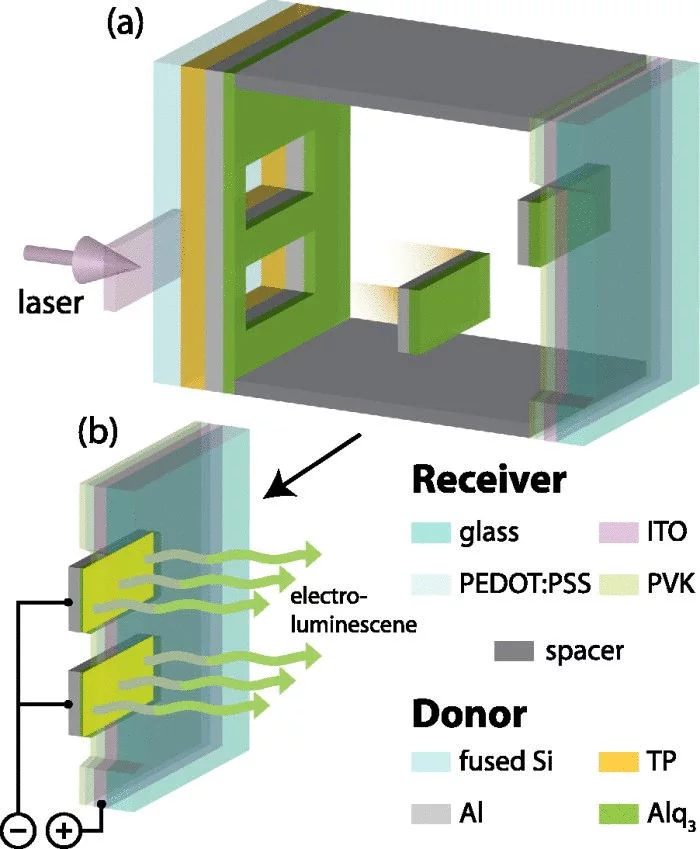Abstract:
Laser-induced forward transfer (LIFT) is a versatile organic light-emitting diode (OLED) pixel deposition process, but has hitherto been applied exclusively to polymeric materials. Here, a modified LIFT process has been used to fabricate small molecule Alq3 organic light-emitting diodes (SMOLEDs). Small molecule thin films are considerably more mechanically brittle than polymeric thin films, which posed significant challenges for LIFT of these materials. The LIFT process presented here uses a polymeric dynamic release layer, a reduced environmental pressure, and a well-defined receiver-donor gap. The Alq3 pixels demonstrate good morphology and functionality, even when compared to conventionally fabricated OLEDs. The Alq3 SMOLED pixel performances show a significant amount of fluence dependence, not observed with polymerical OLED pixels made in previous studies. A layer of tetrabutyl ammonium hydroxide has been deposited on top of the aluminium cathode, as part of the donor substrate, to improve electron injection to the Alq3, by over 600%. These results demonstrate that this variant of LIFT is applicable for the deposition of functional small molecule OLEDs as well as polymeric OLEDs.
Keywords: Laser-induced forward transfer; organic light-emitting diode; functional small molecule OLEDs; polymeric OLEDs;
Facility: ENE, EMPA, LMX, Thin Films and Interfaces
Reference: James R. H. Shaw-Stewart, Thomas Mattle, Thomas K. Lippert, Matthias Nagel, Frank A. Nüesch, Alexander. Wokaun; J. Appl. Phys. 113, 043104 (2013)
Read full article: here
Facility: ENE, EMPA, LMX, Thin Films and Interfaces
Reference: James R. H. Shaw-Stewart, Thomas Mattle, Thomas K. Lippert, Matthias Nagel, Frank A. Nüesch, Alexander. Wokaun; J. Appl. Phys. 113, 043104 (2013)
Read full article: here

